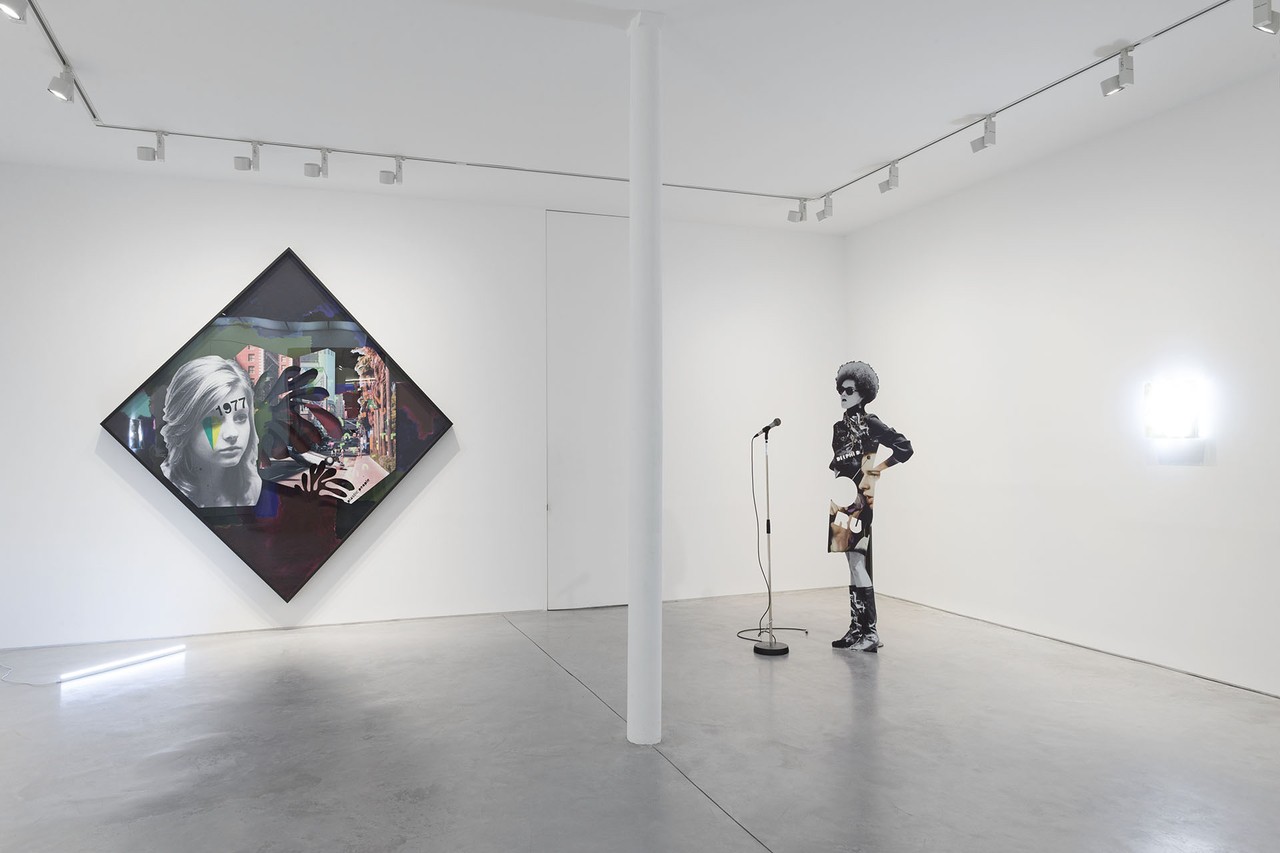Lothar Hempel
Sex and the City
19 Mar - 16 Apr 2016
LOTHAR HEMPEL
Sex and the City
19 March - 16 April 2016
Sex and the City, the tone is set by the auspicious title of Lothar Hempel’s fifth exhibition at Art : Concept gallery. Borrowing from the emblematic American TV series from the 1990s, the artist swaps the four single women from New York for more illustrious icons.
There is no shortage of female figures in Lothar Hempel’s work. We remember the ones that populated The Story of The Old New Girls (2012). But here they are clearly identified, already mythologised, literally postered on the walls of the exhibition. In his series Plakat (poster in German) one finds three Jodie Fosters, at different stages of her early days in cinema. Knowledgeable cinephiles will easily recognise the cited films. But the exact source is not very important. The same ambiguity surrounds the urban or abstract landscapes making up the scenery. Do these places exist? Or are they just studio sets or video game scenery? As for the sculptures, one can make out the famous Diane Keaton as Annie Hall, as well as Kathleen Neal Cleaver, the first female member of the Black Panthers. United by the same common thread, that of action in the cinematic and political sense, they were summoned and projected into a single script in which the viewer plays a central role. As the artist says, “I see my works as empty sculptures unless they are filled with imagination by a third party”.
The artist takes pleasure in developing narrative fiction in which, despite optical illusions, his heroines assert their flatness. They are as if frozen in the action that made them part of history, that of cinema or militant activism. More than references, these figures are understood more as cultural objects, performative objects that help create a shared reality. And this interdependence between a fictional and a real world is also reasserted by the three lightboxes embedded in the walls (Interiors series, 2016).
Just as he abolishes the separation between these two worlds (“fiction creates what we define as reality”), the artist does not limit himself within imposed boundaries in terms of techniques and styles. Like a DJ, the artist-composer (who was a musician in a another life) cheerfully mixes materials, disciplines and references. Going from American sitcoms to the big names of cinema, touching on installation, painting and collage evoking Matisse’s cut-outs as well as Dada posters, his approach is not so much an appropriationist attitude, but more of a tribute to a generation and its political and aesthetic commitments. And the ubiquity of the reference to the poster is not trivial. He extracts, cuts and assembles to reconstruct new pieces of art that are always open to an infinite number of interpretations, because they are the mediums of a multitude of imaginations.
Julia Mossé // translation Matthew Cunningham
Sex and the City
19 March - 16 April 2016
Sex and the City, the tone is set by the auspicious title of Lothar Hempel’s fifth exhibition at Art : Concept gallery. Borrowing from the emblematic American TV series from the 1990s, the artist swaps the four single women from New York for more illustrious icons.
There is no shortage of female figures in Lothar Hempel’s work. We remember the ones that populated The Story of The Old New Girls (2012). But here they are clearly identified, already mythologised, literally postered on the walls of the exhibition. In his series Plakat (poster in German) one finds three Jodie Fosters, at different stages of her early days in cinema. Knowledgeable cinephiles will easily recognise the cited films. But the exact source is not very important. The same ambiguity surrounds the urban or abstract landscapes making up the scenery. Do these places exist? Or are they just studio sets or video game scenery? As for the sculptures, one can make out the famous Diane Keaton as Annie Hall, as well as Kathleen Neal Cleaver, the first female member of the Black Panthers. United by the same common thread, that of action in the cinematic and political sense, they were summoned and projected into a single script in which the viewer plays a central role. As the artist says, “I see my works as empty sculptures unless they are filled with imagination by a third party”.
The artist takes pleasure in developing narrative fiction in which, despite optical illusions, his heroines assert their flatness. They are as if frozen in the action that made them part of history, that of cinema or militant activism. More than references, these figures are understood more as cultural objects, performative objects that help create a shared reality. And this interdependence between a fictional and a real world is also reasserted by the three lightboxes embedded in the walls (Interiors series, 2016).
Just as he abolishes the separation between these two worlds (“fiction creates what we define as reality”), the artist does not limit himself within imposed boundaries in terms of techniques and styles. Like a DJ, the artist-composer (who was a musician in a another life) cheerfully mixes materials, disciplines and references. Going from American sitcoms to the big names of cinema, touching on installation, painting and collage evoking Matisse’s cut-outs as well as Dada posters, his approach is not so much an appropriationist attitude, but more of a tribute to a generation and its political and aesthetic commitments. And the ubiquity of the reference to the poster is not trivial. He extracts, cuts and assembles to reconstruct new pieces of art that are always open to an infinite number of interpretations, because they are the mediums of a multitude of imaginations.
Julia Mossé // translation Matthew Cunningham

